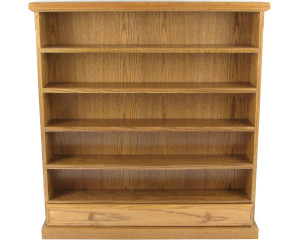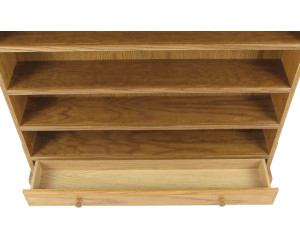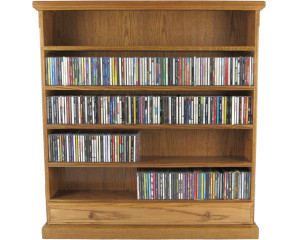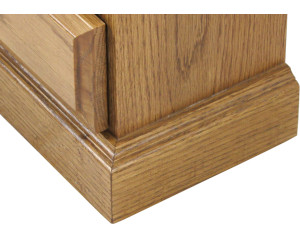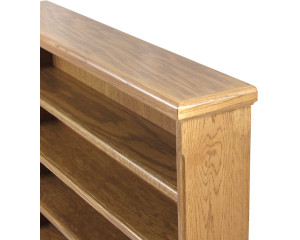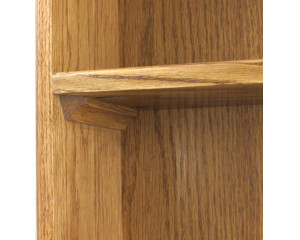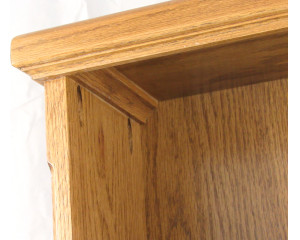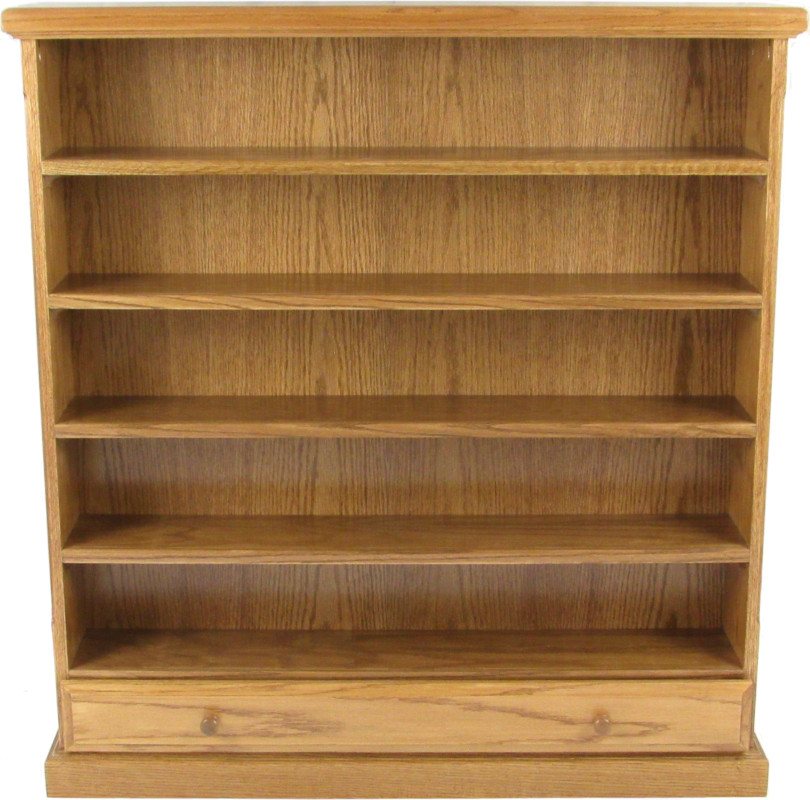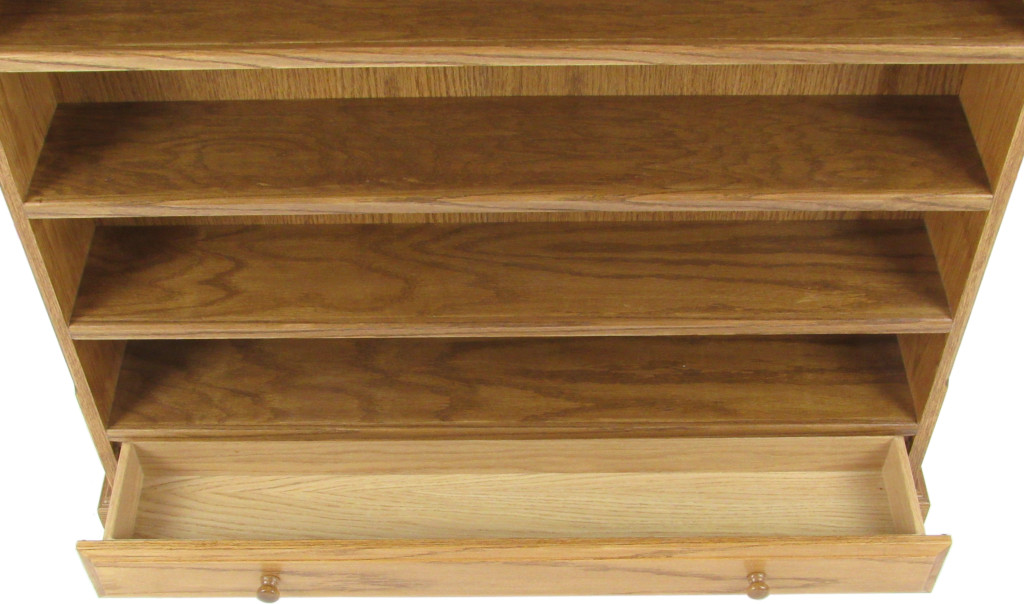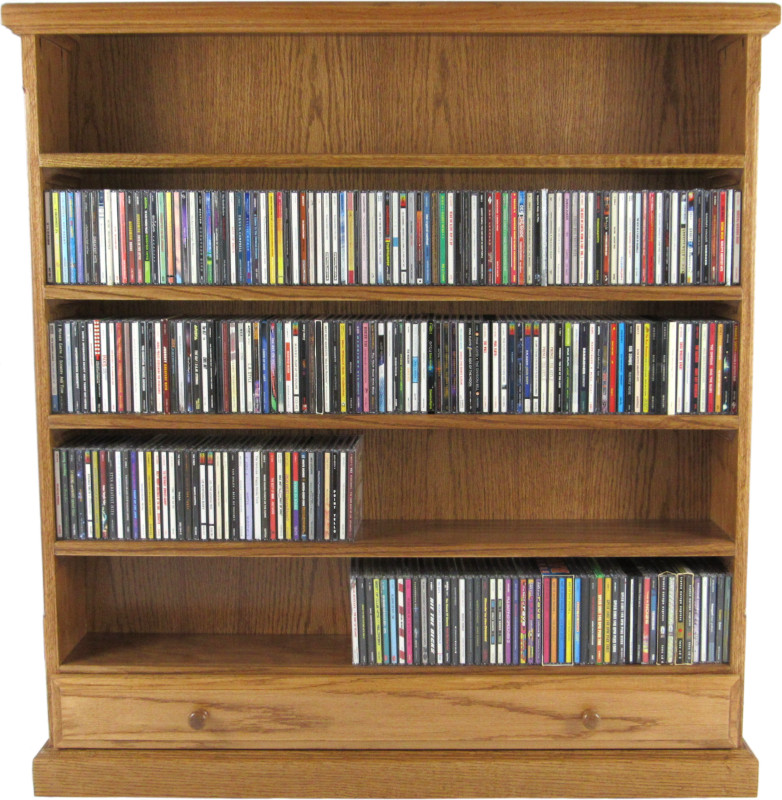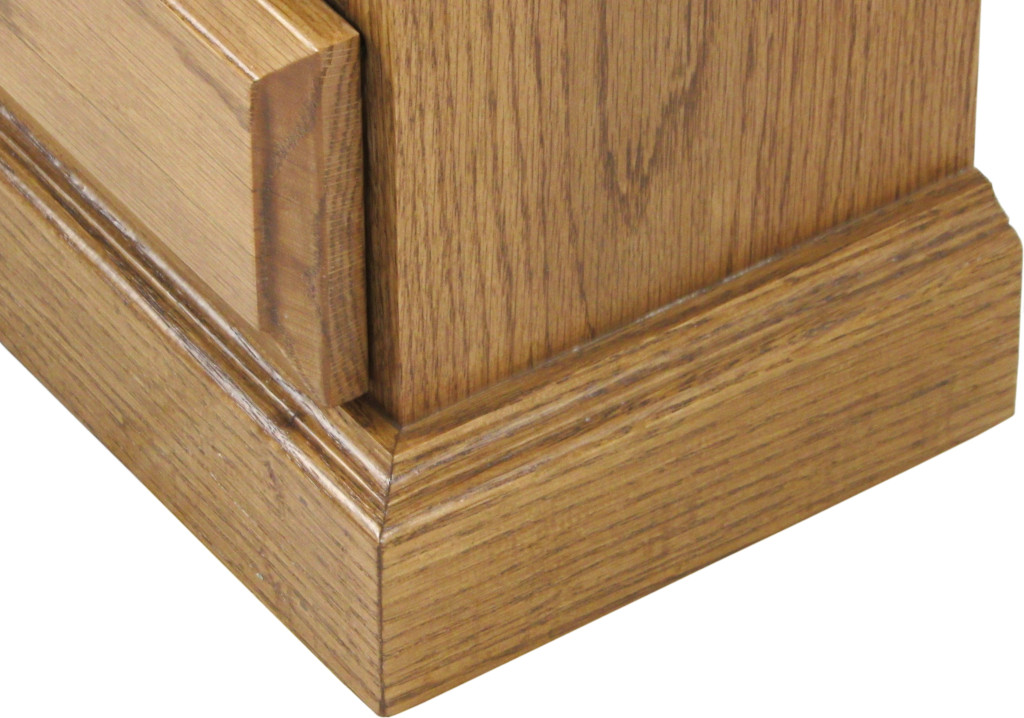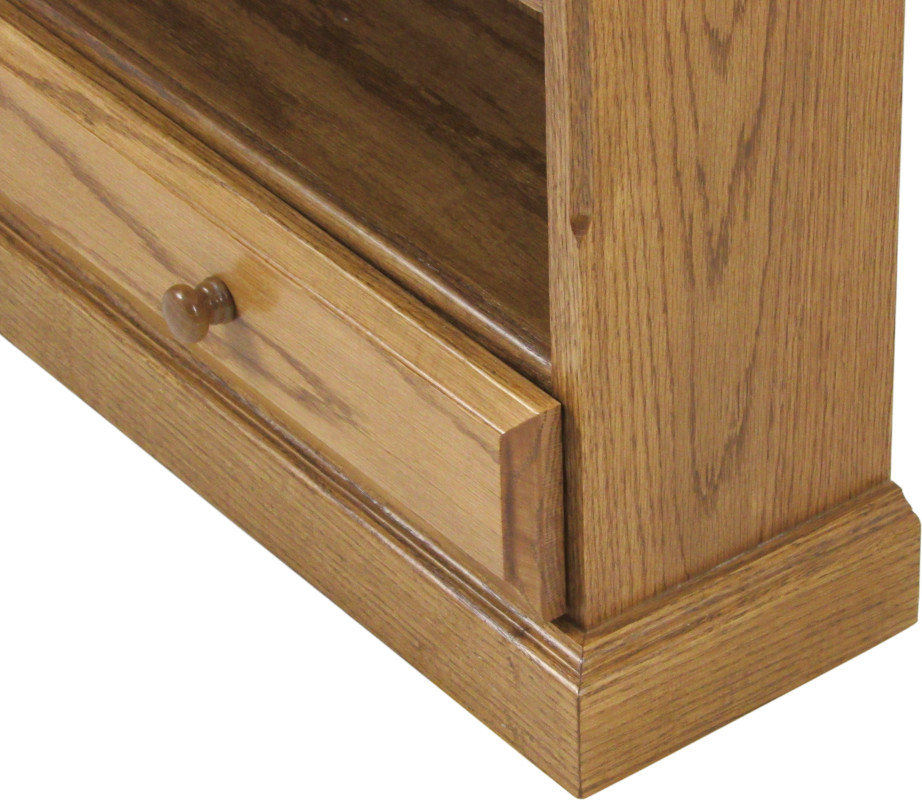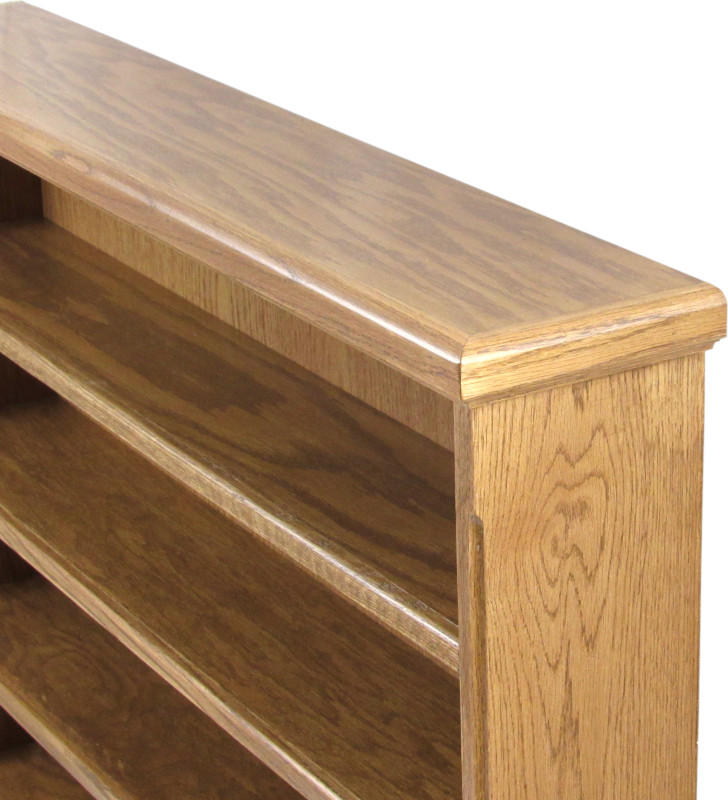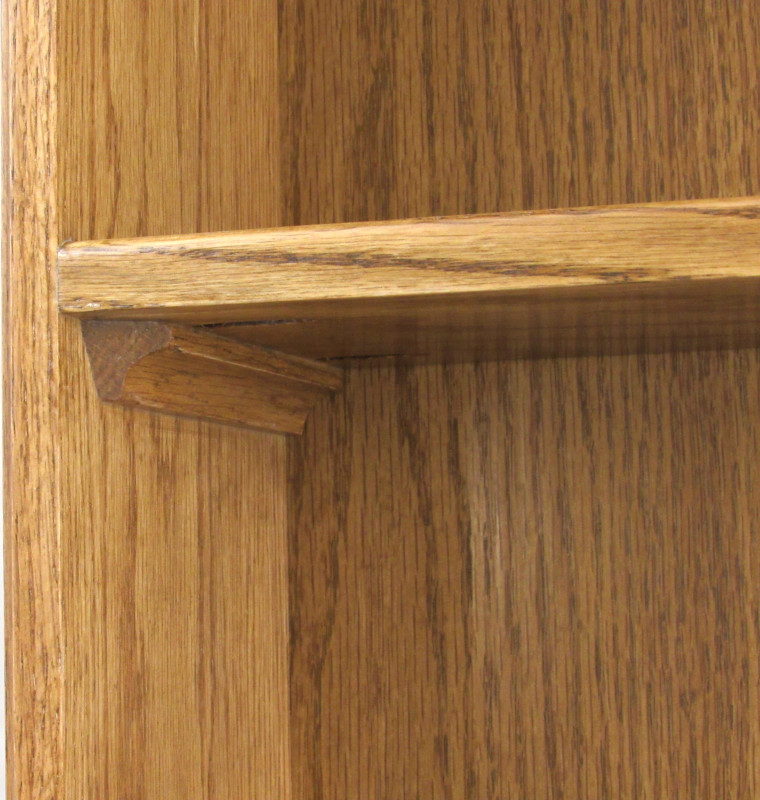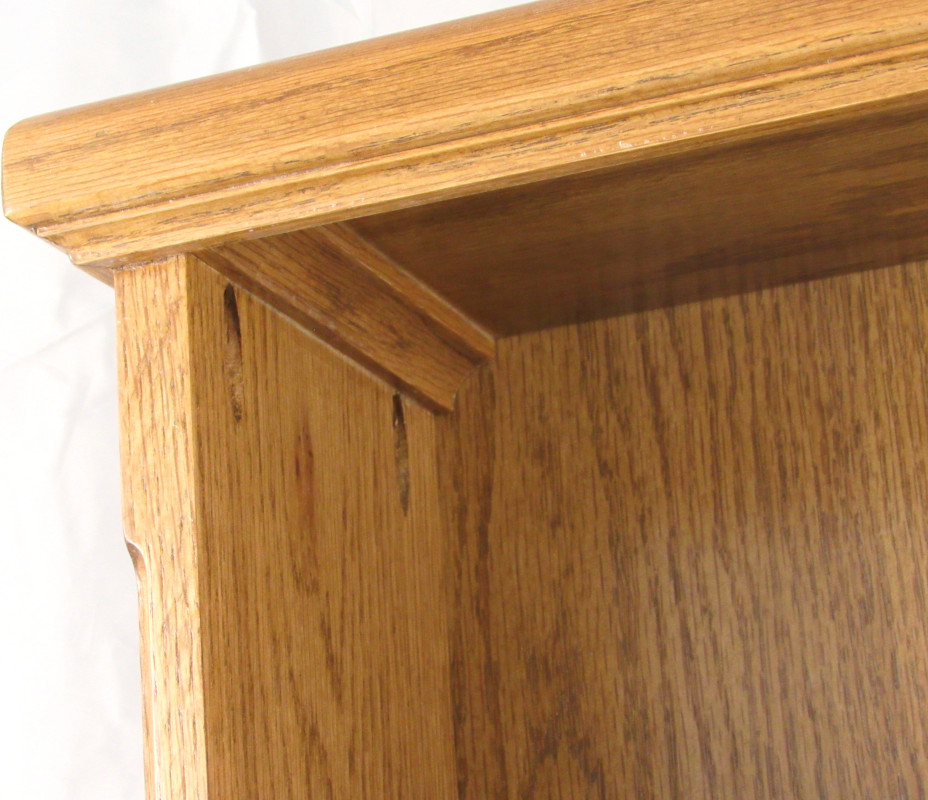This shelving unit was created to replace multiple unmatched, flimsy, plastic and particleboard drawers that held my CDs. The shelves were sized to hold standard jewel CD cases with room to grab them from the top. It can hold an estimated 450 standard cases. A drawer was added at the bottom to hold odd-sized items or sleeves from boxes.
Each shelf consists of plywood with a solid front edge attached via tongue-and-groove construction. The top of the solid edge was formed with a 1/4" roundover bit. The shelves are attached to the sides using pocket screws. Each shelf is supported on the sides by a 5-1/2" x 3/4" x 3/4" piece of solid oak shaped with a 1/2" cove bit. The front of the supports have a 30 degree compound cut beveled edge. These shelf supports were added since no glue was used on the edges of the shelves when the pocket screws were fastened. Similar shelf supports appear underneath the top, but are 6" long and do not have the beveled front.
The sides are 3/4" thick and 6-1/4" wide solid oak. Pocket screws are used to attach the plywood top. The outside front edges of the sides were shaped with a 1/4" cove bit, starting approximately 2-1/2" from the top and ending approximately 3" from the top of the drawer face.
The drawer consists of a complete drawer box plus a separate drawer face. The bottom of the box is 1/4" oak plywood inserted into a groove in all four sides of the box. The exposed edges of the box were softened with a 1/8" roundover bit. The front of the drawer face was formed with an European style door edge bit. The knobs are solid oak, 1" tall with a 1" diameter. Each knob is attached with a stainless steel screw. The drawer is attached to the carcass using 6" long full extension drawer slides. The drawer face is stained the same color as the rest of the unit, but the drawer box is not stained.
The bottom trim is 3/4" thick and 2-1/2" wide. The exposed edge was formed with a cove-and-bead bit. The top trim is 3/4" thick and 1-1/2" wide. The lower exposed edge was formed with the same cove-and-bead bit as the lower trim. The upper exposed edge was formed with a 1/2" roundover bit.
